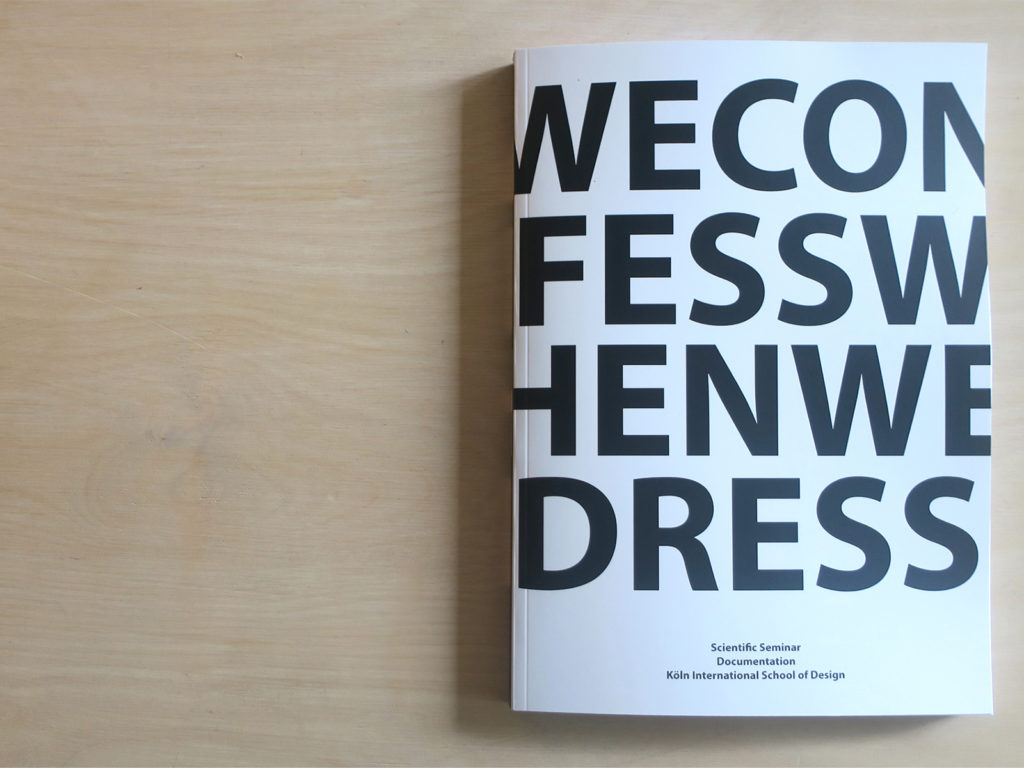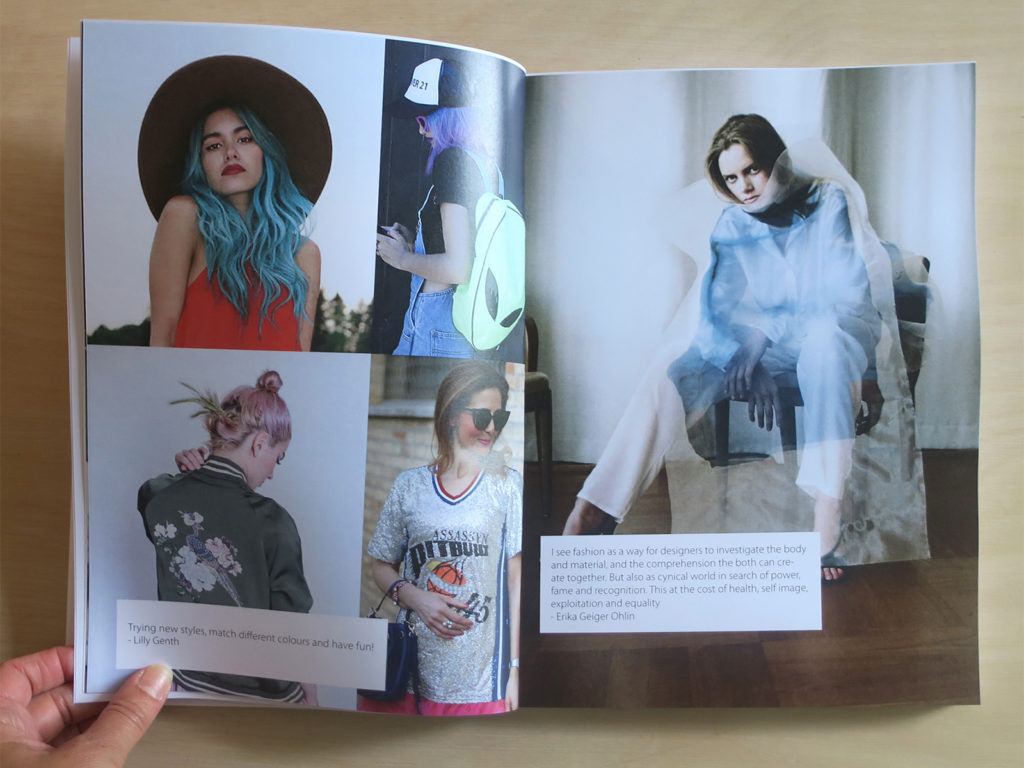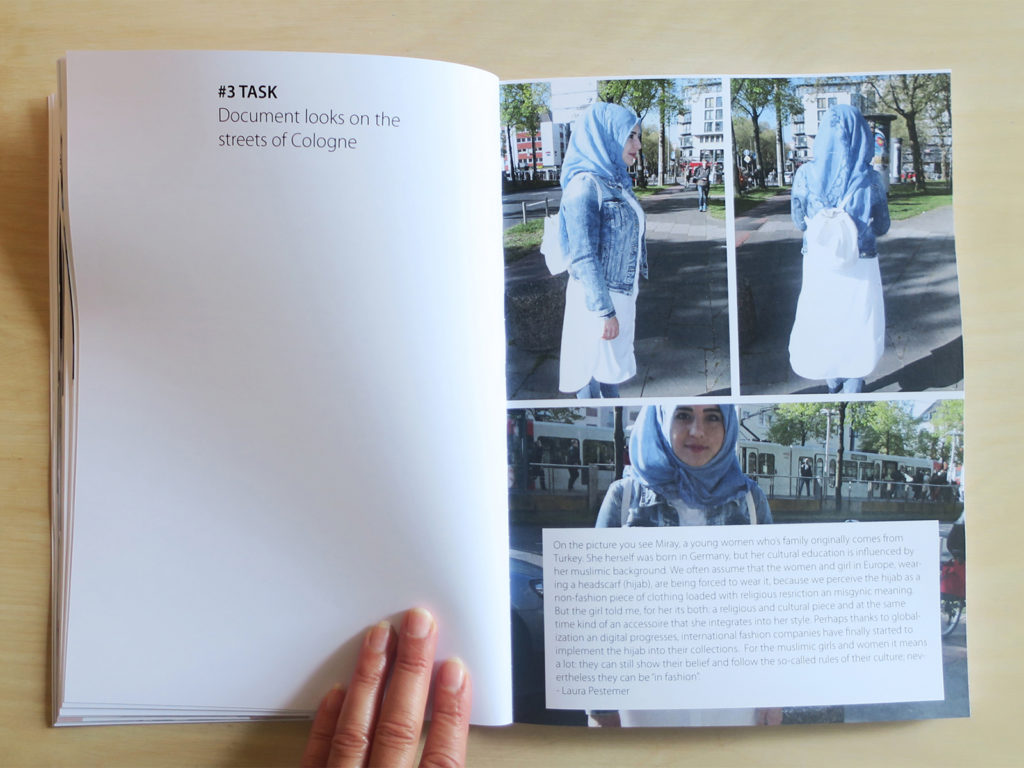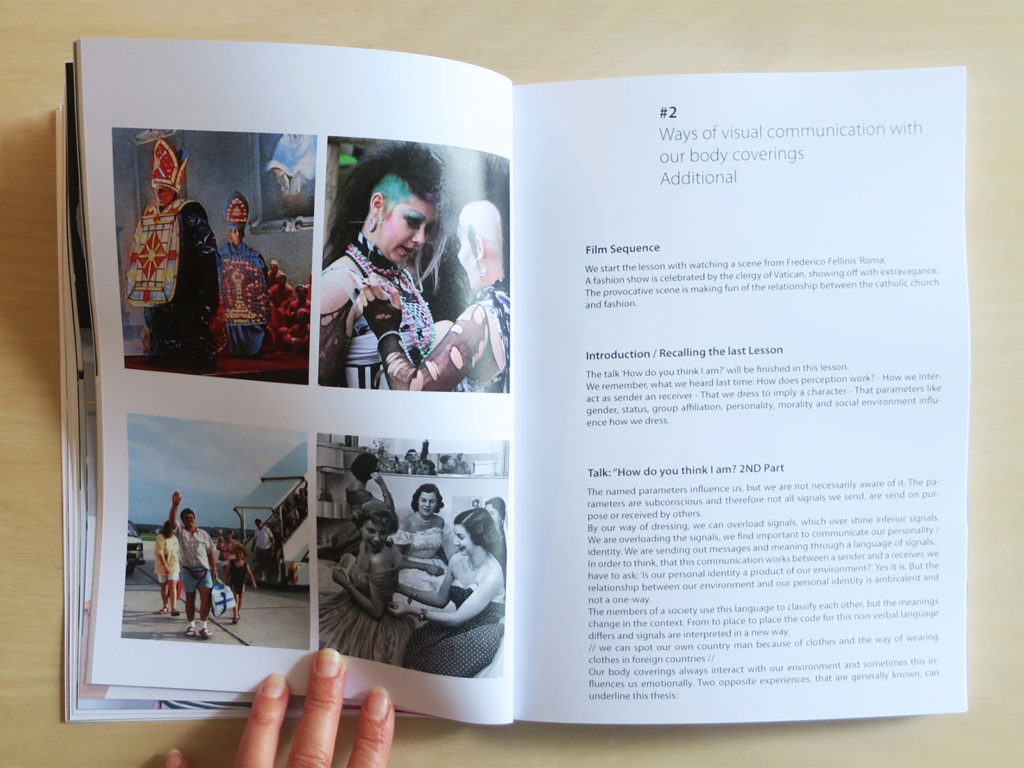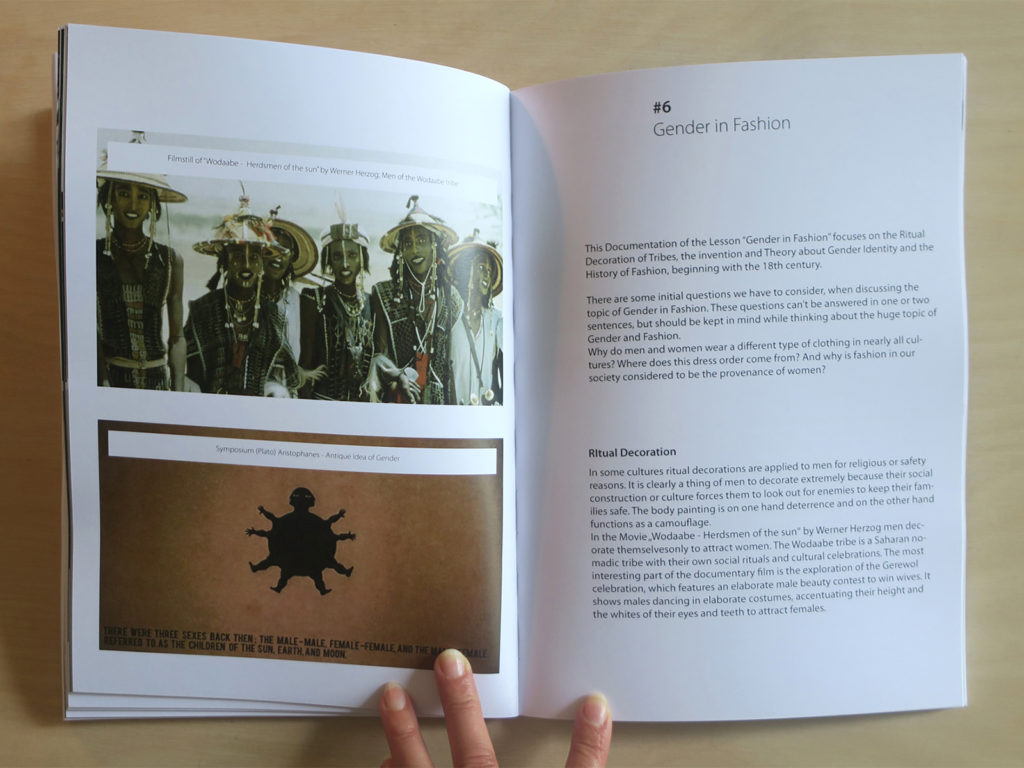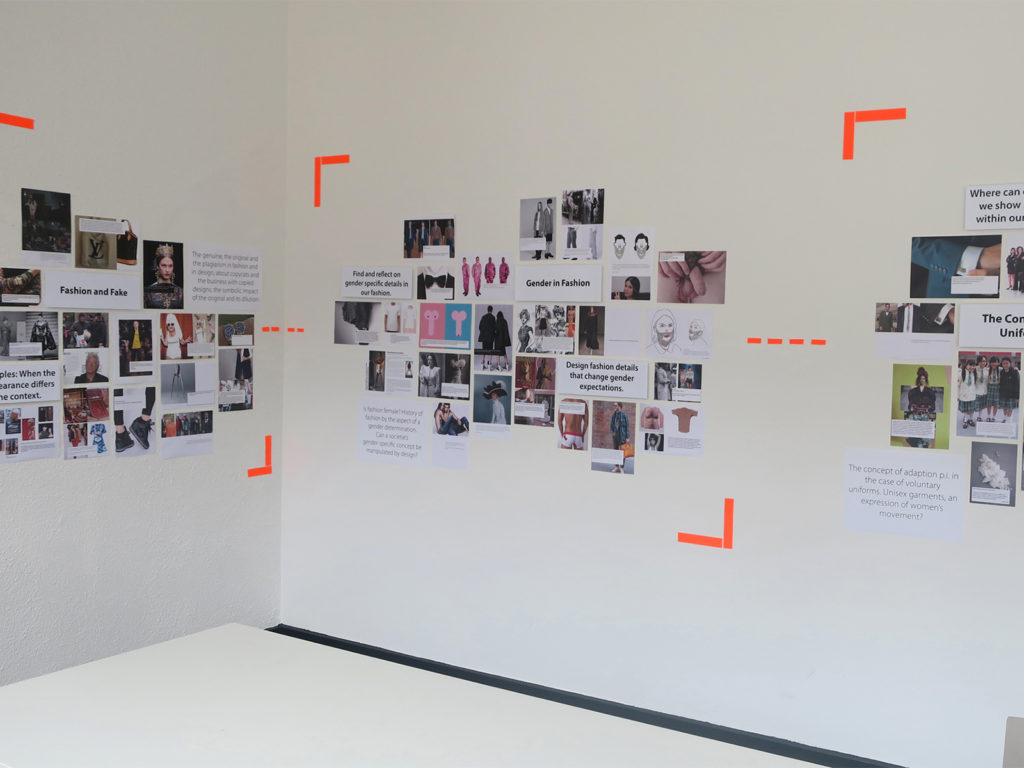Scientific Seminar by Patricia Hepp
“Only anarchists are pretty“. That slogan was once written on the shirt sleeves of renowned 1970ties British fashion designer, artist and Sex Pistols’ music manager Malcolm McLaren, closely linked with fashion designer Vivienne Westwood. Today, fashion, politics, design, communication, art and gender issues are still closely interrelated though each of them seems to be a single unit for itself.
In the KISD seminar “We Confess When We Dress“, 19 KISD students, under the supervision of the Cologne-based interdisciplinary designer Patricia Hepp, in the summer term 2016 analyzed and reflected on how we position our personal self in our social and cultural surrounding – using our layered facades to communicate. The past and current relevance of it is obvious: “Fashion is something we deal with every day,“ says KISD student Charlotte Werth. Another statement claims that “what we wear says more about us than we might think.“
Dress codes, uniforms, fashion patterns of conformity and non-conformity always decisively shaped history and perception, formed cultures and subcultures, were avant-garde before turning into fashionable mainstream.
Thus, the seminar also took a closer look at the topics of “The Principle of Rise and Decay“, The Concepts of Uniforms“, “Politics with Fashion“, “Gender in Fashion“ and “Ways of Visual Communication“ by fashion and design. KISD students also directly interacted with customers and people on Cologne’s streets and squares – taking pictures of them, asking them why they chose this special outfit for the day with the following quotes: “I wear this because it is the last time to do this before I start my business career“ or “Germans do not accept individual styles and look at you strange if your clothes are not standard.“
The academic seminar by Patricia Hepp lasted from April to June and finally documented the students’ findings in a publication of a specific magazine portraying the different approaches to fashion, design, communication and their interrelations – with the students’ concluding statement: “Fashion is a great medium to express humans’ beliefs. Messages, concepts and ideas can be easily put on clothing and it has certain impact on society. However, fashion is more than cotton. It is also about beliefs, environmental resources and even humans’ lives. It is needed to develop sustainable fashion, which is also meant to be the future of fashion.“
